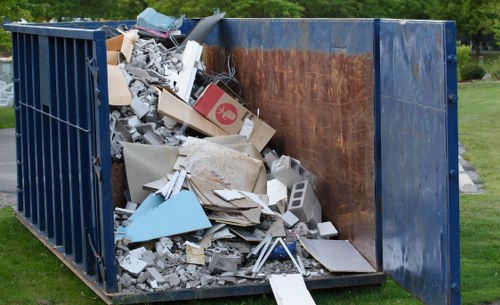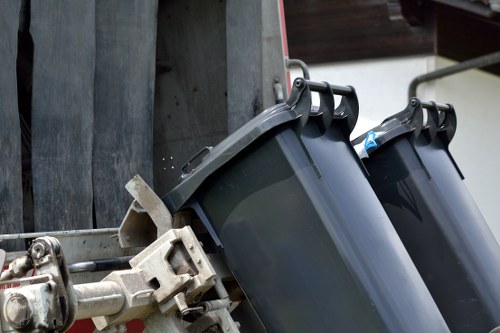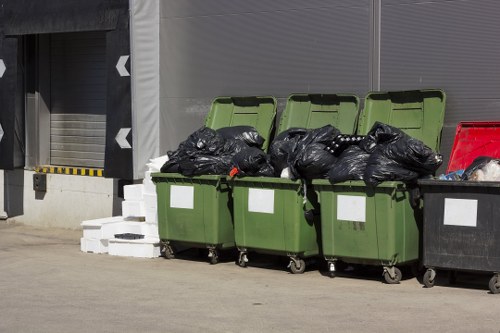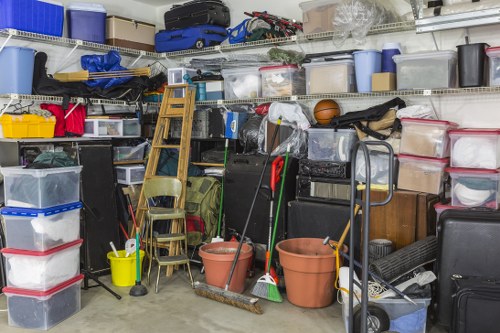Furniture Clearance in Commercial Waste Disposal

Managing commercial waste effectively is crucial for businesses aiming to maintain a clean and productive environment. Among the various types of commercial waste, **furniture clearance** stands out due to its unique challenges and significant impact on operational efficiency.
Furniture clearance involves the removal of old, unused, or damaged furniture from commercial spaces such as offices, restaurants, hotels, and retail stores. This process not only helps in decluttering the workspace but also ensures that waste is disposed of responsibly.
In this article, we will delve into the essentials of furniture clearance in commercial waste disposal, exploring best practices, environmental considerations, and the benefits it offers to businesses.

Understanding Furniture Clearance
Furniture clearance is more than just removing old items from your premises; it's a strategic approach to waste management that aligns with a company's sustainability goals.
Businesses often accumulate a significant amount of furniture over time, whether through growth, remodeling, or simply the wear and tear of daily use. Properly managing this inventory is essential to ensure that unnecessary items do not clutter the workspace or contribute to environmental pollution.
Effective furniture clearance involves several steps, including assessment, removal, recycling, and disposal. Each step requires careful planning and execution to maximize efficiency and minimize environmental impact.

Benefits of Professional Furniture Clearance Services
Opting for professional furniture clearance services offers numerous advantages for businesses:
- Efficiency: Professionals have the tools and expertise to clear furniture quickly and safely.
- Cost-Effective: Outsourcing reduces the need for in-house resources and minimizes potential damage to existing property.
- Environmental Responsibility: Many clearance services prioritize recycling and responsible disposal, aligning with corporate sustainability initiatives.
Moreover, professional services ensure compliance with local regulations regarding waste disposal, avoiding potential fines and legal issues.
By leveraging expert services, businesses can focus on their core operations while maintaining a clean and organized environment.

Steps for Effective Furniture Clearance
Implementing an effective furniture clearance process involves several key steps:
- Assessment: Evaluate the quantity and condition of furniture to determine what can be reused, recycled, or disposed of.
- Planning: Develop a timeline and strategy for the removal process, minimizing disruption to daily operations.
- Removal: Safely remove furniture using appropriate equipment and techniques to prevent damage to property and ensure worker safety.
- Recycling: Coordinate with recycling centers to process materials that can be repurposed.
- Disposal: Responsibly dispose of items that cannot be recycled or reused, adhering to environmental regulations.

Environmental Impact of Furniture Disposal
Improper furniture disposal can have severe environmental consequences. Items left in landfills contribute to pollution and waste buildup, while certain materials can take centuries to decompose.
By adopting sustainable furniture clearance practices, businesses can significantly reduce their ecological footprint. This includes choosing recyclable materials, donating usable items to charities, and partnering with eco-friendly disposal services.
Additionally, responsible disposal aligns with corporate social responsibility (CSR) goals, enhancing a company's reputation and appeal to environmentally conscious consumers.
Importance of Compliance with Regulations
Adhering to local and national regulations is paramount in furniture clearance. Non-compliance can result in hefty fines and damage to a company's reputation.
Regulations may cover aspects such as waste separation, recycling mandates, and the handling of hazardous materials. It's essential to stay informed about relevant laws and ensure that all disposal practices meet or exceed these standards.
Working with licensed waste disposal professionals can help navigate the complexities of regulatory compliance, ensuring that all legal requirements are met.
Choosing the Right Disposal Partner
Selecting a reliable waste disposal partner is critical to the success of your furniture clearance efforts.
When evaluating potential partners, consider factors such as their experience in commercial waste management, commitment to sustainability, and ability to handle large-scale clearances efficiently.
Additionally, seek out companies that offer comprehensive services, including assessment, removal, recycling, and disposal, to streamline the process and ensure consistency.
ConclusionFurniture clearance in commercial waste disposal is a vital component of effective business operations and environmental stewardship.
By understanding the process, leveraging professional services, and prioritizing sustainable practices, businesses can achieve a clutter-free workspace while minimizing their environmental impact.
Implementing a strategic furniture clearance plan not only enhances operational efficiency but also supports broader sustainability goals, contributing to a better future for both the business and the planet.
Contact us today to learn how our professional furniture clearance services can help your business maintain a clean, efficient, and environmentally responsible workspace.